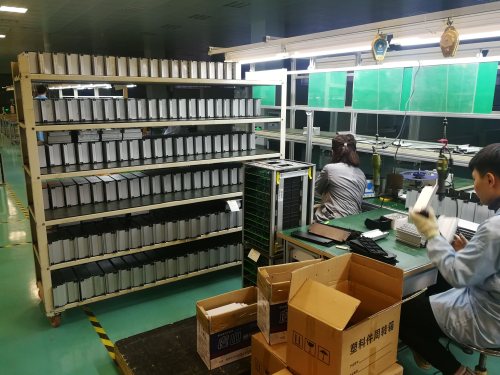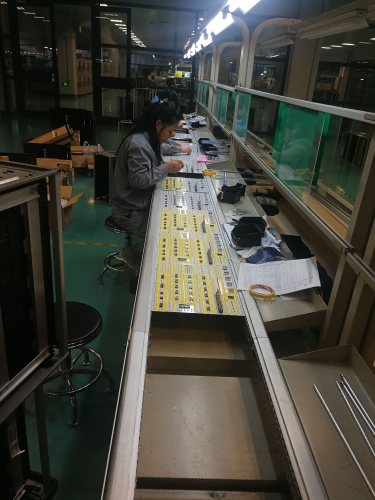The sensor experiment box adopts an integrated structure, which is composed of a sensor installation platform, a regulated power supply, a display instrument, an oscillator, various sensors and supporting software. It is convenient for laboratory management and students' experimental operation, and the sensor structure is transparent, which can deepen students' understanding and understanding of the sensor principle.
(1) Sensor mounting table part
The free ends of the double parallel vibrating beams and the bottom of the vibrating disk are respectively equipped with magnetic steel, which can be connected to the low-frequency exciter through their respective micrometers or exciting coils for static or dynamic measurement.
Strain beam: The strain beam is made of stainless steel sheet, and the end of the double beam structure has better linear displacement.
(2) Stabilized power supply
DC ±15V, mainly provides heating power for high-performance low-wave fractional temperature experiments, and the maximum excitation is 1.5A. ±2V~±10V five-speed output, the maximum output current is 1A.
(3) Display instrument
Digital voltage and frequency meter/tachometer: 3.5-digit display, voltage measurement range 0-200mV, 0-2V, 0-20V, frequency display range 0-9999Hz, speed display range 0-9999r/m.
(4) Oscillator
1. Audio oscillator:
0.4KHz—10KHz output is continuously adjustable, V-p-p value is 20V, 0°, 180° reverse phase output, the maximum power output current of Lv terminal is 0.5A.
2. Low frequency oscillator:
The 1-30Hz output is continuously adjustable, the Vp-p value is 20V, the maximum output current is 0.5A, and the Vi terminal can be used as a current amplifier.
(5) Various sensors

1. Metal strain sensor
Platinum strain resistance value: 350Ω×4, temperature compensation sheet 350Ω×2
2. Thermocouple (thermoelectric) sensor
DC resistance: about 10Ω, composed of two copper-constantan thermocouples connected in series, the graduation number is T, and the temperature of the cold end is the ambient temperature
3. Differential Transformer
Measuring range: ≥5mm DC resistance: 5Ω-10Ω, a transparent hollow coil made of a primary coil and two secondary coils, the iron core is soft ferrite.
4. Inductive solenoid sensor: range ≥ 5mm
5. Eddy current displacement sensor:
Measuring range: 3mm, DC resistance: 1Ω-2Ω, composed of flat coil wound by multi-strand enameled wire and metal eddy current sheet
6. Hall sensor
The linear semiconductor Hall film produced by Japan JVC company is placed in the gradient magnetic field composed of ring magnets, measuring range: ±3mm
7. Magnetic sensor
DC resistance: 30Ω-40Ω, composed of coil and iron core, sensitivity: 0.5v/m/s
8. Piezoelectric acceleration sensor
It consists of a double ceramic piezoelectric wafer and a copper mass. Resonant frequency: >35Hz
9. Capacitive sensor
Measuring range: ±5mm, differential variable area capacitive sensor composed of two sets of fixed plates and one set of moving plates
10. Piezoresistive pressure sensor
Range: 15Kpa, power supply: ≤4V
11. Fiber optic sensor
Y-shaped semicircle distributed optical fiber, transmitting and receiving circuit composed of light guide sensor, linear range: ±1mm, infrared transmitting and receiving.
12. PN junction temperature sensor
The temperature sensor made by using the good linear temperature and voltage characteristics of the semiconductor PN junction,
Sensitivity: -2mV/℃.
13. Thermistor
Semiconductor thermistor NTC: temperature system is negative, 10K Ω at 25°C
14. Gas sensor
Alcohol Measuring range: 50—2000ppm
15. Humidity resistor
Polymer thin film resistance type: RH: several MΩ-several KΩ, response time: less than 10 seconds for moisture absorption and dehumidification. Humidity coefficient: 0.5 RH%/℃, measuring range: 10%R11--95%RH, working temperature: 0℃--50℃
16. Photoelectric speed sensor
Composed of optocoupler, Darlington output and shaping circuit, n≤2400r/min
(6) Software (a laboratory provides one set)
Configure network teaching software. It can introduce various multimedia information and controls such as graphics, images, screens, and texts into the teaching process in real time and dynamically in the classroom, and use computer technology, network technology, and multimedia technology to carry out modern teaching activities. Use the teacher's computer to realize: screen broadcast, black screen silence, screen monitoring, experiment setting, homework assignment, roll call and sign-in, electronic quiz, report inspection, report review feedback, interactive communication, electronic pointer, electronic whiteboard, student information management, log management , online status, student restrictions, sending notifications, remote information, U disk restrictions, keyboard and mouse lock, screen capture tool, electronic hand raising, student information grouping, remote access.
(7) Open sensor circuit design and intelligent sensor design modules (one set is provided by one laboratory)
Provide 25 kinds of intelligent sensor design modules, each module has a supporting independent test software and provides an independent detection and control interface for the host computer, and can set up 25 innovative application training projects. Including eddy current material discrimination, light-emitting diode measurement, level measurement, temperature and humidity measurement, RGB measurement, color perception sensor, brake light sensor, magnetic field sensor, photometric sensor, button experiment, contact sensor, three-axis analog sensor, vibration sensor, laser Sensor, relay control sensor, tilt angle sensor, thermistor, infrared obstacle avoidance module, soil temperature sensor, piezoelectric vibration sensor, environmental perception sensor, tracking sensor, active buzzer switch control, heat source detection module, Traffic light control, LED running lights, DC voltage detection module, weak signal detection module.
8. Experimental content
1. Metal strain sensor
(1) Performance measurement of strain gauges - single arm bridge
(2) Strain gauge: comparison of single arm, half bridge and full bridge
(3) Strain gauge: temperature adjustment and compensation
(4) One of the composition and application of strain gauge AC full bridge - amplitude measurement
(5) The second application of strain gauge AC full bridge - electronic scale
2. Hall sensor
(1) DC excitation static displacement characteristics of Hall sensor
(2) Application of Hall sensor - electronic scale
(3) AC excitation static displacement characteristic experiment of Hall sensor
(4) Application of Hall sensor - amplitude measurement
3. Eddy current sensor
(1) Static calibration of eddy current sensors
(2) The influence of the measured material on the characteristics of the eddy current sensor
(3) One of the applications of eddy current sensors - amplitude measurement
(4) The second application of eddy current sensor - electronic scale
4. Differential transformer (mutual inductance)
(1) Performance of differential transformer (mutual inductance)
(2) Differential transformer (mutual inductance) zero point residual voltage compensation experiment
(3) Calibration of differential transformer (mutual inductance)
(4) Application of differential transformer (mutual inductance) - vibration measurement
(5) Application of differential transformer (mutual inductance) - electronic scale
(6) Static displacement performance of differential solenoid (self-inductance) sensor
(7) Dynamic displacement performance of differential solenoid (self-inductance) sensor
(8) Static and dynamic characteristics of differential area capacitive sensors
5. Principle and phenomenon of thermocouple
6. Phase shifter experiment
7. Phase-sensitive detector experiment
8. Piezoelectric sensor
(1) Dynamic response experiment of piezoelectric sensor
(2) The influence of piezoelectric sensor lead capacitance on voltage amplifier, charge amplifier
9. Diffused silicon piezoresistive pressure sensor experiment
10. Optical fiber displacement sensor experiment
11. Temperature measurement experiment of PN junction temperature sensor
12. Thermistor temperature measurement demonstration experiment
13. Gas sensor experiment
14. Humidity resistance (RH) experiment
15. Photoelectric sensor speed measurement experiment
16. Data Acquisition System Experiment - Static Acquisition Example


